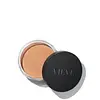What's inside
What's inside
 Key Ingredients
Key Ingredients

 Benefits
Benefits

No benefits
 Concerns
Concerns

 Ingredients Side-by-side
Ingredients Side-by-side

Octyldodecanol
EmollientC15-19 Alkane
SolventBis-Diglyceryl Polyacyladipate-2
EmollientTribehenin
EmollientSilica
AbrasiveMica
Cosmetic ColorantSynthetic Wax
AbrasiveJojoba Esters
EmollientDisteardimonium Hectorite
StabilisingPersea Gratissima Oil
Skin ConditioningHelianthus Annuus Seed Oil
EmollientTocopherol
AntioxidantBeta-Sitosterol
Emulsion StabilisingSqualene
EmollientDecylene Glycol
Skin Conditioning1,2-Hexanediol
Skin ConditioningCaprylyl Glycol
EmollientParfum
MaskingCI 77891
Cosmetic ColorantIron Oxides
CI 42090
Cosmetic ColorantOctyldodecanol, C15-19 Alkane, Bis-Diglyceryl Polyacyladipate-2, Tribehenin, Silica, Mica, Synthetic Wax, Jojoba Esters, Disteardimonium Hectorite, Persea Gratissima Oil, Helianthus Annuus Seed Oil, Tocopherol, Beta-Sitosterol, Squalene, Decylene Glycol, 1,2-Hexanediol, Caprylyl Glycol, Parfum, CI 77891, Iron Oxides, CI 42090
C15-19 Alkane
SolventOctyldodecanol
EmollientPentaerythrityl Tetraisostearate
EmollientTridecyl Trimellitate
EmollientSynthetic Wax
AbrasiveRaphanus Sativus Seed Extract
Skin ConditioningCera Microcristallina
Emulsion StabilisingSynthetic Fluorphlogopite
Silica Silylate
EmollientMica
Cosmetic ColorantCalcium Dihydrogen Phosphate
BufferingDisteardimonium Hectorite
StabilisingTocopheryl Acetate
AntioxidantMethyl Di-T-Butyl Hydroxyhydrocinnamate
AntioxidantHelianthus Annuus Flower
Skin ConditioningRosmarinus Officinalis Leaf Extract
AntimicrobialSilicon/Titanium/Cerium/Iron Oxides
C15-19 Alkane, Octyldodecanol, Pentaerythrityl Tetraisostearate, Tridecyl Trimellitate, Synthetic Wax, Raphanus Sativus Seed Extract, Cera Microcristallina, Synthetic Fluorphlogopite, Silica Silylate, Mica, Calcium Dihydrogen Phosphate, Disteardimonium Hectorite, Tocopheryl Acetate, Methyl Di-T-Butyl Hydroxyhydrocinnamate, Helianthus Annuus Flower, Rosmarinus Officinalis Leaf Extract, Silicon/Titanium/Cerium/Iron Oxides
Ingredients Explained
These ingredients are found in both products.
Ingredients higher up in an ingredient list are typically present in a larger amount.
C15-19 alkane is a mixture of alkanes. Alkanes are hydrocarbons with carbon atoms held together by single bonds.
It is a synthetically created solvent and emollient often used to replace silicones or mineral oil. As an emollient, C15-19 Alkane helps soften and soothe the skin. Emollients create a barrier to trap moisture inside.
C15-19 Alkane is often used with mineral UV filters such as titanium dioxidide and zinc oxide. It helps these UV filter ingredients be more spreadable.
C15-19 Alkane is biodegradable.
Learn more about C15-19 AlkaneDisteardimonium Hectorite comes from the clay mineral named hectorite. It is used to add thickness to a product.
It can also help stabilize a product by helping to disperse other ingredients.
Hectorite is a rare, white clay mineral.
Learn more about Disteardimonium HectoriteMica is a naturally occurring mineral used to add shimmer and color in cosmetics. It can also help improve the texture of a product or give it an opaque, white/silver color.
Serecite is the name for very fine but ragged grains of mica.
This ingredient is often coated with metal oxides like titanium dioxide. Trace amounts of heavy metals may be found in mica, but these metals are not harmful in our personal products.
Mica has been used since prehistoric times throughout the world. Ancient Egyptian, Indian, Greek, Roman, Aztec, and Chinese civilizations have used mica.
Learn more about MicaOctyldodecanol is a fatty alcohol. It is primarily used to enhance the texture of products.
As an emulsifier, Octyldodecanol helps prevent the oils and waters from separating. It also prevents ingredients from creating foam when shaken.
Octyldodecanol is created by reducing fatty acid to an alcohol.
Due to its high molecular weight, it does not get absorbed into the skin.
Learn more about OctyldodecanolSynthetic Wax is created from fossil fuels such as natural gas. It is used to enhance texture, adjust pH, and as an occlusive.
It may also be used as an abrasive ingredient to exfoliate the skin.
Synthetic Wax may not be fungal acne safe.
Learn more about Synthetic Wax